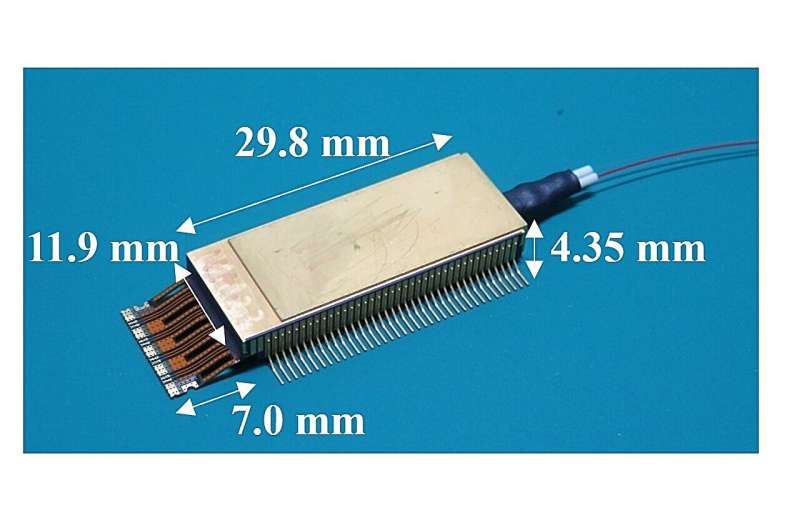
As data traffic continues to increase, there is a critical need for miniaturized optical transmitters and receivers that operate with high-order multi-level modulation formats and faster data transmission rates.
In an important step toward fulfilling this requirement, researchers have developed a new compact indium phosphide (InP)-based coherent driver modulator (CDM) and showed that it can achieve a record high baud rate and transmission capacity per wavelength compared to other CDMs. CDMs are optical transmitters used in optical communication systems that can put information on light by modulating the amplitude and phase before it is transmitted through optical fiber.
“Services that require data capacity, such as video distribution and web conferencing services, have become widespread, and services that more enrich our lives are expected to be introduced in the future,” said Josuke Ozaki from NTT Innovative Devices Corporation in Japan.
“To realize the new services, it is very important to increase the total data rate of optical transmission systems that support the background. If the optical transmission capacity is insufficient, it will be difficult to realize new convenient services and data society. In addition, the development of an optical transmitter that covers the C+L band in a single module enables flexible network operation and reduces equipment costs.
Ozaki will present this research at OFC, a global event for optical communications and networking, which will take place as a hybrid event 24–28 March 2024 at the San Diego Convention Center.
One measure of the speed of data transmission is the baud rate, which indicates the number of signal changes that occur every second in a communication channel. With higher baud rates, the bandwidth of the modulation signal required for each channel increases and fewer channels can be transmitted in the conventional C-band. This makes it even more important to extend the wavelength bandwidth from the C-band to the L-band, which are together referred to as the C+L band.
Although modulators made from the semiconductor InP have excellent optical and radio frequency characteristics, they exhibit strong wavelength dependence that has made it difficult to extend their wavelength range. To overcome this challenge, the researchers developed a novel InP modulator chip with an optimized semiconductor layer and waveguide structure that can operate over a wide wavelength range. By using the new modulator chip, they achieved the world’s first CDM with an InP modulator chip that can transmit in C+L band and has a package body measuring just 11.9 × 29.8 × 4.35 mm3.
In the C+L band, the new CDM exhibited an electro-optic 3-dB bandwidth of more than 90 GHz, an insertion loss at maximum transmission of less than 8 dB, and an extinction ratio of 28 dB or more. The researchers also applied their new CDM in experiments using 180 Gbaud probabilistically constellation-shaped 144-level quadrature amplitude modulation (PCS-144QAM) signals, demonstrating an unprecedented net bit rate of 1.8 Tbps over 80-km standard single mode fiber in the C+L band. According to the study authors, this is the first time an InP-based CDM has been shown to operate in the C+L bands and the world record’s transmission capacity per wavelength has been reported for a CDM
Alpha samples of the CDM are ready for shipping from the NTT Innovative Devices Corporation.
“The next step is to further increase the baud rate for a higher transmission speed, ” said Ozaki. “In doing so, it is important to find new modulator’s structure and assembly configuration, including a driver die and a package, that can achieve higher EO bandwidth with both lower power consumption and smaller formfactor.”
Citation:
New InP-based modulator with record-high bit rates could help move more data faster (2024, February 13)
retrieved 13 February 2024
from https://phys.org/news/2024-02-inp-based-modulator-high-bit.html
This document is subject to copyright. Apart from any fair dealing for the purpose of private study or research, no
part may be reproduced without the written permission. The content is provided for information purposes only.







